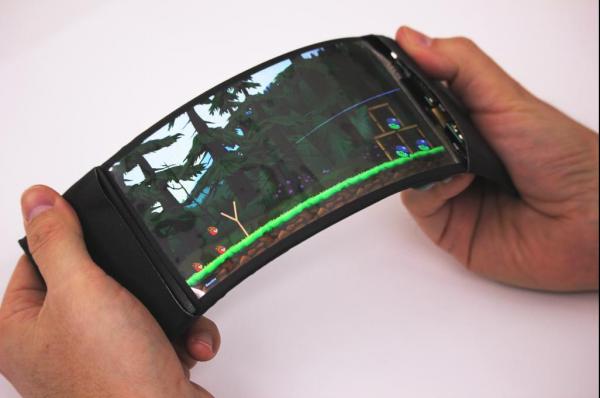KINGSTON, Ontario, Feb. 16 (UPI) — Researchers at Queen’s University have created the first flexible smartphone. The wireless device boasts a high-resolution, full-color screen that responds to touching and bending.
Just as current software allows smartphones to respond to various combinations of finger movements, the newly invented flexible smartphone — dubbed ReFlex — and its apps respond to different bend gestures.
“When this smartphone is bent down on the right, pages flip through the fingers from right to left, just like they would in a book,” Roel Vertegaal, a computer scientist and director of Queen’s Human Media Lab, said in a press release.
“More extreme bends speed up the page flips,” Vertegaal continued. “Users can feel the sensation of the page moving through their fingertips via a detailed vibration of the phone. This allows eyes-free navigation, making it easier for users to keep track of where they are in a document.”
The smartphone uses mostly components that are already part of other commercial products — a hi-def 720p LG Display Flexible OLED touch screen and Android 4.4 “KitKat” circuit board. But the ReFlex is enhanced by newly developed bend sensors behind the display.
When ReFlex users exercise bend gestures on the display, their fingers are met with passive force feedback and voice coil — features that simulate the physical forces of real-life interaction with a 3D object.
“This allows for the most accurate physical simulation of interacting with virtual data possible on a smartphone today,” Vertegaal said.
The technology can enhance to user experience when playing a game like Angry Birds and employing a virtual slingshot.
“As the rubber band expands, users experience vibrations that simulate those of a real stretching rubber band,” Vertegaal explained. “When released, the band snaps, sending a jolt through the phone and sending the bird flying across the screen.”
Researchers demonstrated their new technology at this week’s ACM International conference on Tangible, Embedded and Embodied Interaction, held at Stanford University.






